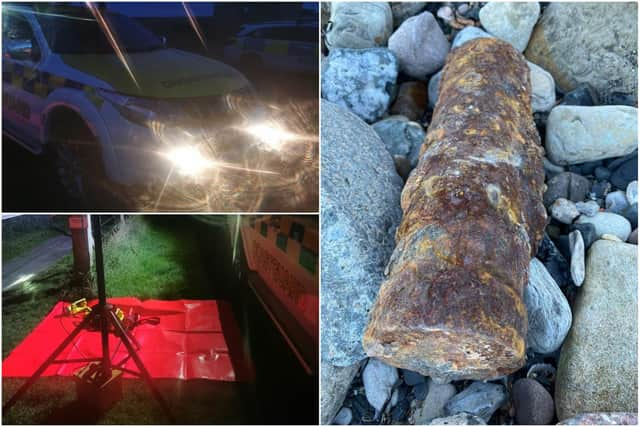Army called in after suspected Second World War explosive is found on Northumberland coast
and live on Freeview channel 276
Seahouses Coastguard Rescue Team and their colleagues from Howick were paged last night, Monday, August 31, at 6.45pm following a report of a suspected ordnance in Seahouses, close to Gun Rock.
The officers were tasked with finding the device and securing it, as well as keeping people at a safe distance until the Army’s Explosive Ordnance Disposal (EOD) unit arrived to assess the situation.


Advertisement
Hide AdAdvertisement
Hide AdA spokesperson for the Howick team said: “The teams arrived on scene and were met by the first informant who directed them to the object below the cliffs near Seahouses Point.
"The teams cordoned the area off to ensure the safety of the public and floodlighting was set up to illuminate the area.
"The Royal Logistics Corps EOD team had been tasked and were en-route to identify the device and make it safe.
"The EOD team arrived on scene and assessed the object, using X-rays to try to positively identify it.
Advertisement
Hide AdAdvertisement
Hide Ad"While the X-rays were unable to positively identify it due to its condition – it had been in the water a considerable time – they concluded it was most likely to be a World War II or pre World War II cluster type device, a canister that appeared to contain a number of ball bearings now rusted together.
”The EOD team ensured the device was safe and transported it from the scene for safe disposal.
"Ordnance is common along the Northumberland coastline.
"During both wars the coast from Druridge to Goswick was used as a firing and bombing training range for the RAF and Royal Navy.
”Due to this, objects get washed up and may not even look like ordnance due to deterioration, barnacles, rust, etc.
Advertisement
Hide AdAdvertisement
Hide Ad"If you ever see anything that looks like ordnance, or something that just doesn’t look right, then call the Coastguard on 999 immediately.
"We would rather find it was nothing then leave potentially deadly ordnance on the beach or rocks.”
They added the Coastguard can be reached by calling 999.